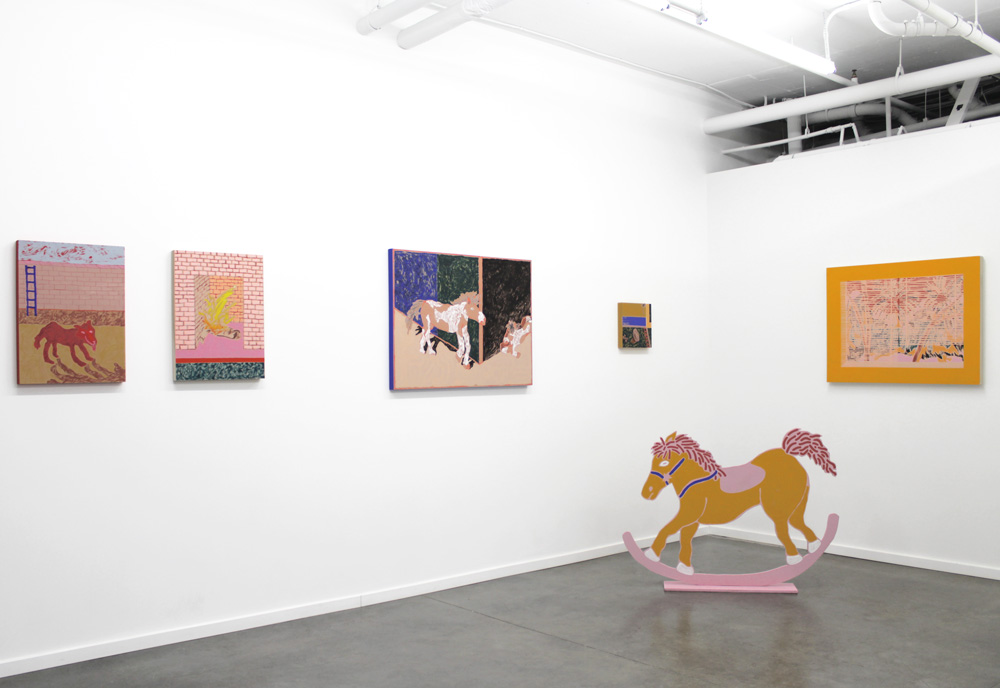Face Vase (Fem.), 2017, glaze on clay, 18 x 19 x 9"
Face Vase (Masc.), 2017, glaze on clay, 14.5 x 10.5 x 8"
Intimacy Vase, 2017, glaze on clay, 11 x 3.5 x 3.5"
Penetration Vase (Mask), 2017, glaze on clay, 4.5 x 4.5 x 5"
Rock Head Vase, 2017, glaze on clay, 6.5 x 6 x 6"
Two Face Vase, 2017, glaze on clay, 7.5 x 6.5 x 5"
Humanoid Table, 2017, glaze on clay and acrylic on wood, 31.5 x 11.5 x 47"
From the gallery desk, Nick Norman’s carved wood sculpture Humanoid Table appears to be just a thin, bright pink neck and bulbous head floating in space. The sculpture’s face emerges from the nothingness—red snakelike tongue slithering out, green ceramic eyes, and ears like chunks of molded shiny pink bubble gum. Each month this seat forces a frame around the work on view, obscuring the majority and focusing on only a fragment. Humanoid Table, like many pieces that have occupied this view in the past, has become that prized visitor who keeps the gallery sitters company. It offers a place for our eyes to wander and find respite from the computer screen, but it also only lets us in on part of the story.
The sculpture takes on new life and meaning when seen in its entirety. No longer just a detached neck and head, Humanoid Table, is exactly that, a table. In fact the only human quality to the piece is the head and neck—the legs have no feet, and the table top is a flat slab. These attributes also make it a very functional object; for this exhibition it’s used to display two small ceramic sculptures also by Norman. Although Humanoid Table is far from human, it does illicit issues surrounding labor and oppression. This is in contrast to Norman's other humanoid sculptures which function as vessels—vases don't imply the same exertion of energy in the way tables do. What would it mean to use this table in your life, to bring it home and eat off of it, or place heavy objects on its back while the eyes stare out blankly? The human quality of Humanoid Table is perhaps most present when we see it as a piece of furniture working hard for its human owners.
–Gabi Lewton-Leopold
Installation view of Humanoid Table in Animal Laughter. Paintings by William Matheson.
















































